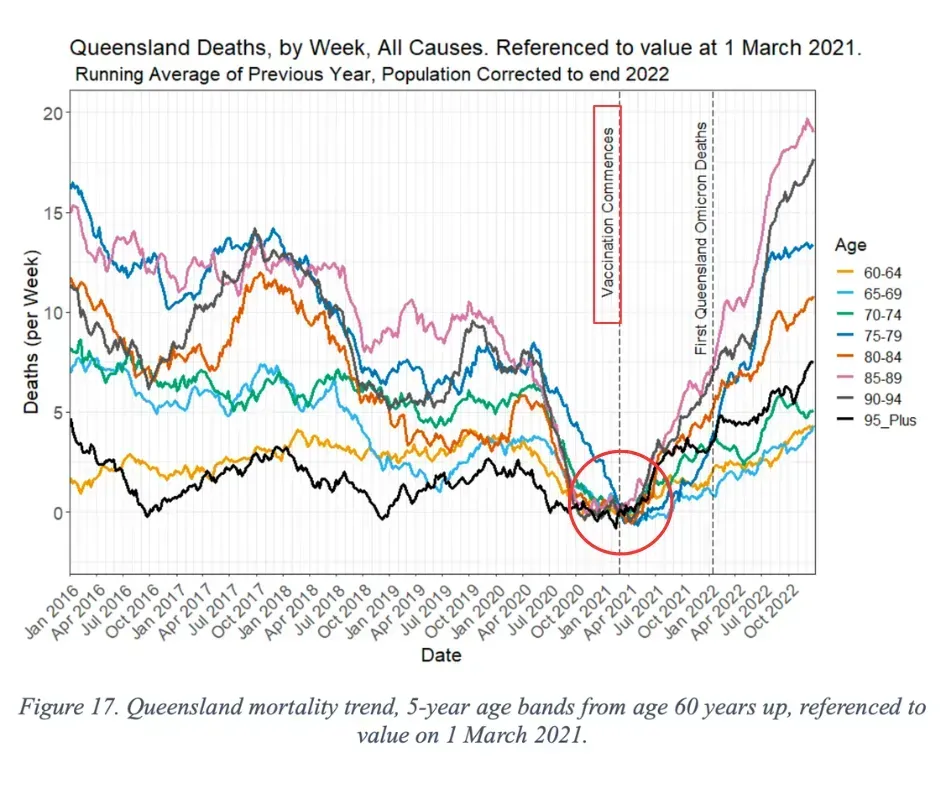Rebekah Barnett
The Australian Senate voted to establish a parliamentary inquiry into the nation’s excess deaths today, giving the green light to what is possibly the first inquiry of this nature in the world.
One year and five motions is what it took for Senator Ralph Babet, of the United Australia Party, to finally get the go-ahead on the inquiry.
Senator Babet tabled two unsuccessful motions calling for an inquiry into Australia’s excess mortality last March, followed by another unsuccessful motion in February of this year.
Several weeks later, his fourth motion calling for the Senate to acknowledge the need for an inquiry scraped through with a win, marking a shift in attitude within the Senate and paving the way for today’s vote to finally establish an inquiry.
“Fifth time’s the charm!” said Senator Babet in a statement after his motion passed successfully.
“This appears to be a world-first inquiry for what is a global issue. May this committee process give a voice to the family members of the deceased and deliver the answers that our nation so desperately needs.”
The successful motion, co-sponsored by independent Senators Jacqui Lambie and David Pocock, calls for the Community Affairs References Committee to conduct an inquiry into factors contributing to excess mortality in 2021 – 2023 and to make recommendations on how to address them.
The vote was won 31:30 with only the left-wing Labor Party and the Greens opposing the motion (see full breakdown here).
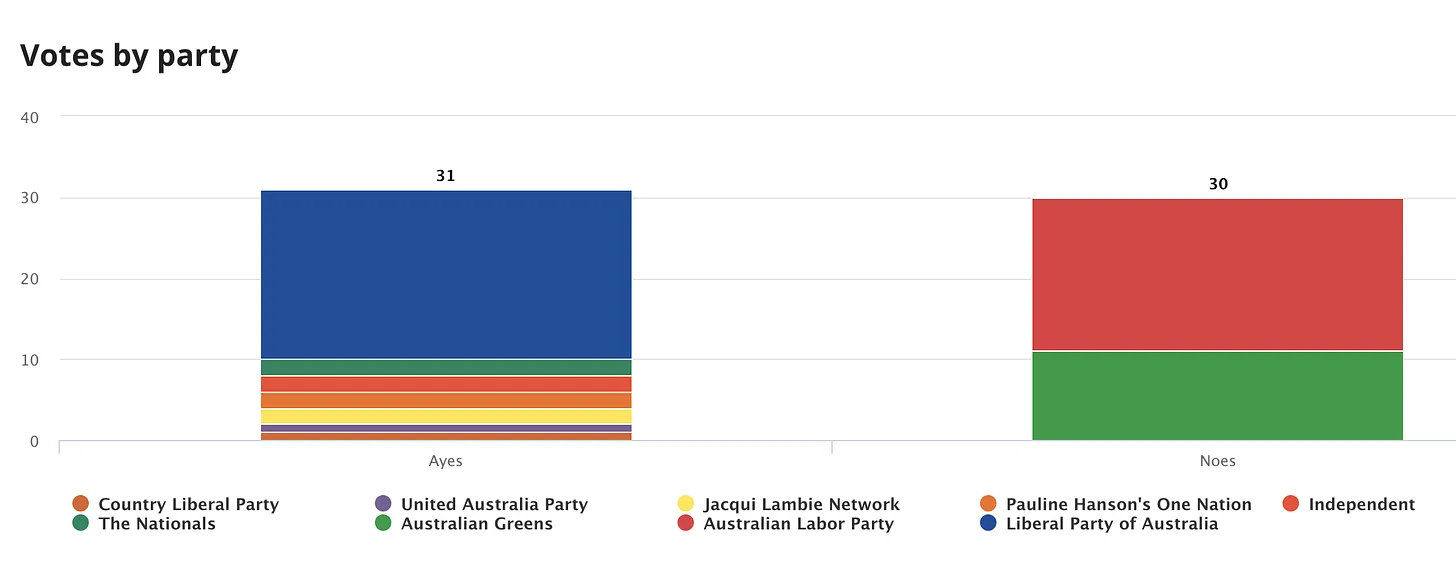
The phenomenon of excess all-cause mortality is an issue for nations all around the world since the pandemic kicked off in 2020, yet governments have shown little interest or initiative in investigating why, or what to do about it.
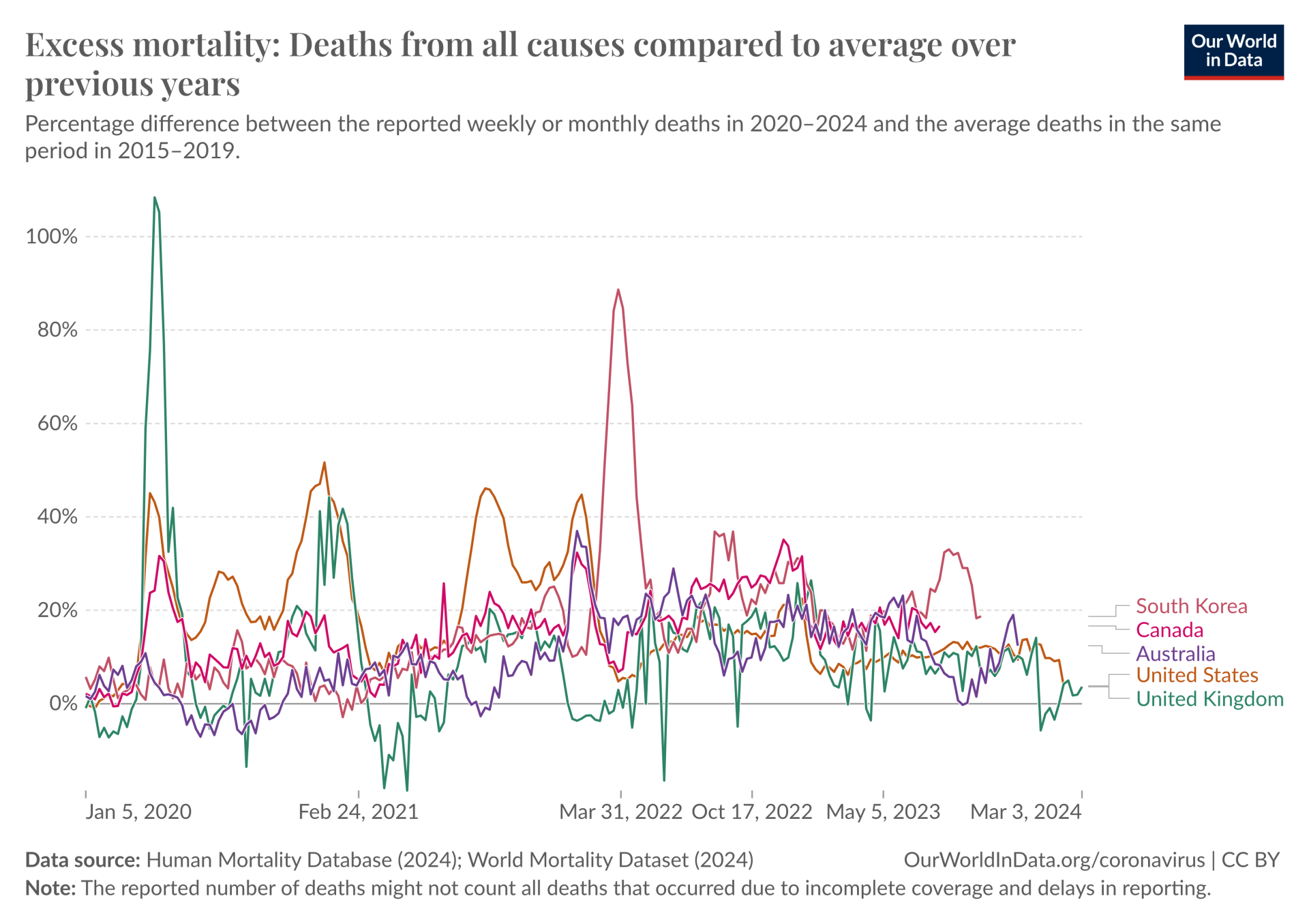
Australia saw record-high excess mortality throughout the pandemic, peaking at 11.7% above the expected baseline in 2022. This number was initially touted to be as high as 15%, but the Australian Bureau of Statistics (ABS) revised its excess death numbers down with the adoption of new modelling in 2023.
Though 2023 saw fewer excess deaths, the ABS reports that the excess was “sustained” and “statistically significant” into the first half of 2023.
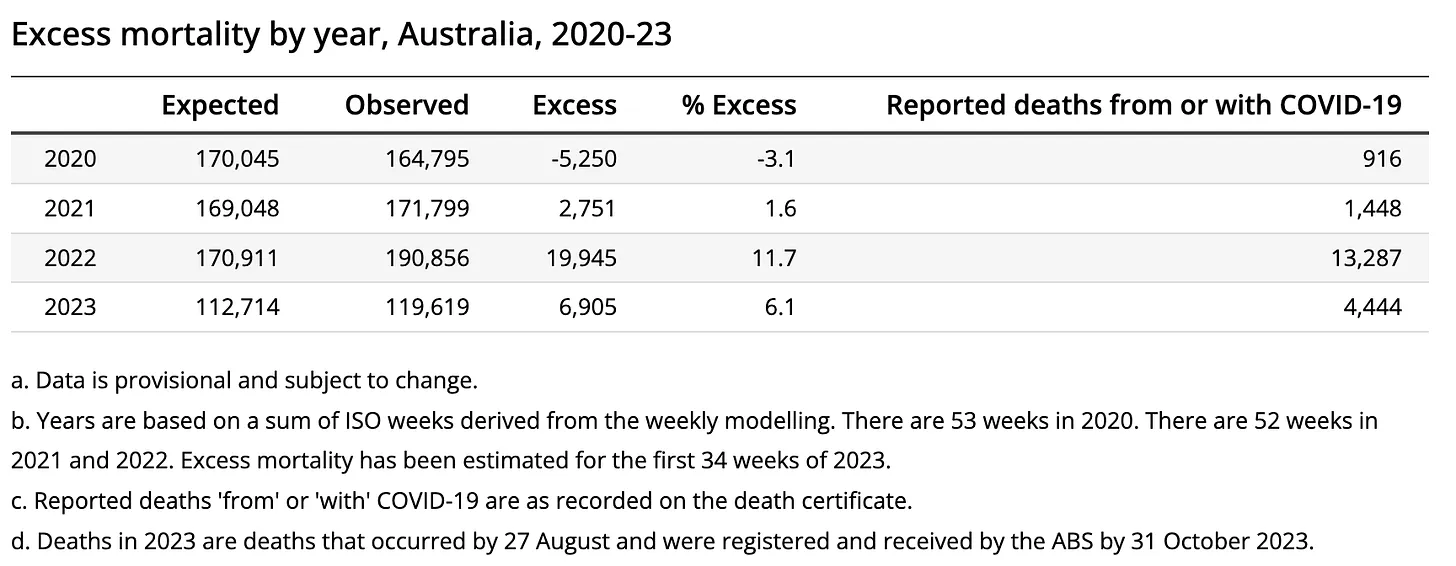
Figures released by the ABS just today show the majority of 2023 deaths sitting above the baseline range, although mortality did come within baseline range during weeks 31 – 43.
Cancer remains the leading cause of death in Australia, accounting for around a third of all deaths year on year, followed by dementia, respiratory disease, and heart disease. In 2022, Covid was the sixth-leading cause of death, falling to eighth in 2023.
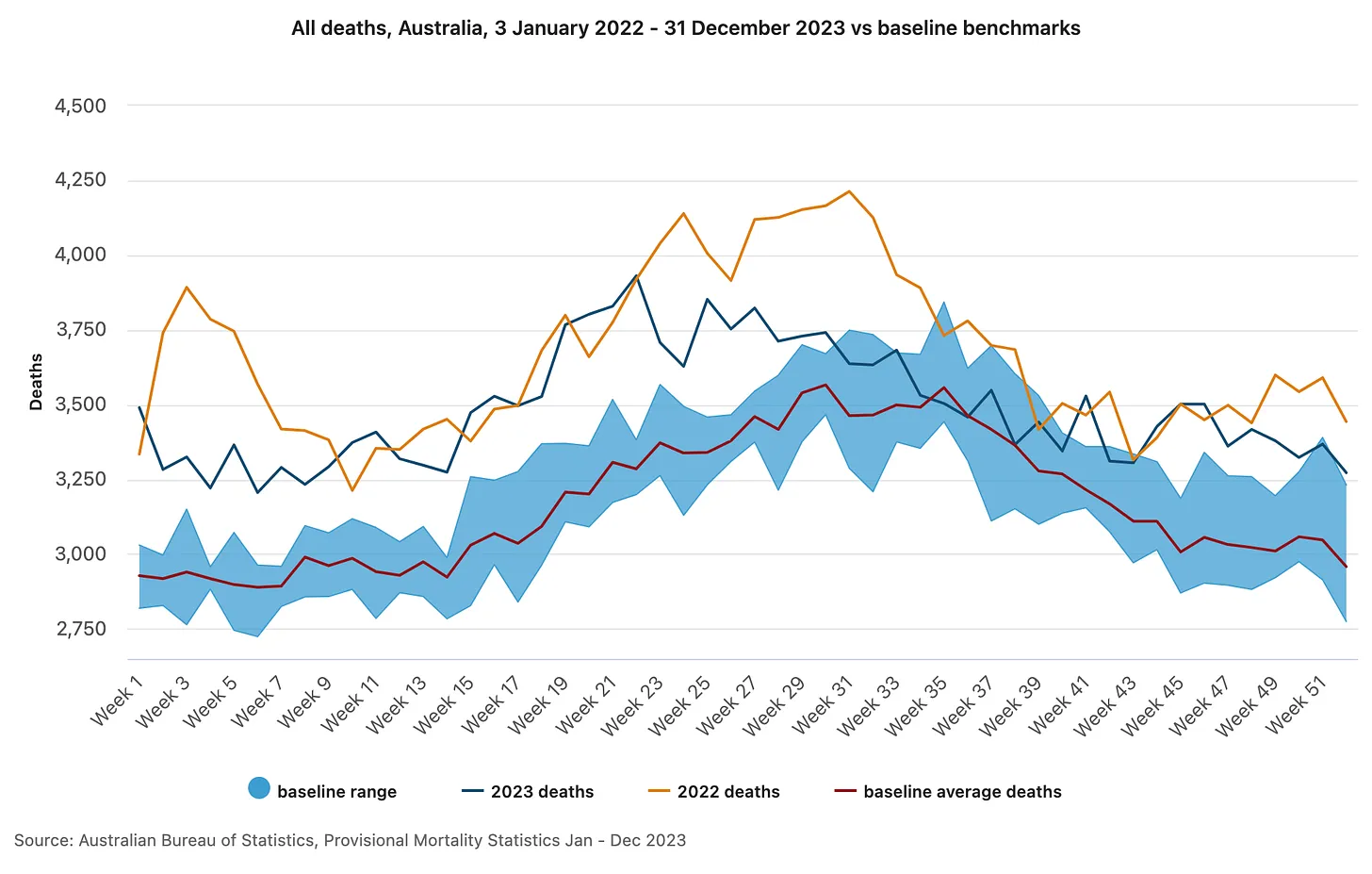
Naturally, some of the excess deaths seen in Australia and around the world are attributable to Covid, but the virus cannot account for all of the excess mortality. In fact, the lax criteria for attribution of deaths to Covid means that the impact of the virus on excess mortality is probably overestimated.
Initially, the ABS differentiated between deaths due to Covid alone, and deaths with other causal factors, revealing that just 8.6% of deaths with Covid were caused solely by the virus. Subsequently, this reporting method was done away with, and all deaths with a causal sequence of events (including with pre-existing chronic conditions) were swept into the ‘due to Covid’ category, taking the accounting of deaths due to Covid from 8% to approximately 80%.

Even so, an analysis of 2022 excess mortality by Australia’s peak actuarial body, the Actuaries Institute, pinned only half of Australia’s excess deaths on Covid.
That leaves the rest of the excess mortality unexplained.
The actuaries suggest that other factors driving Australia’s excess deaths may include: mortality displacement, undiagnosed Covid, mental health issues, and unhealthy pandemic-influenced lifestyle changes. Note that the latter two are documented knock-on effects of government pandemic policies.
An independent excess death probe led by the Australian Medical Professionals’ Society (AMPS) highlighted the impact of the Covid vaccination program as another potential driver of excess mortality.
One particularly interesting report featured in the AMPS inquiry was an Australian study of all-cause mortality trends conducted on the pre-Covid but post-vaccinated Queensland population. The analysis showed that deaths started trending upwards with the Covid vaccine rollout, not Covid.
While the Therapeutic Goods Administration (TGA) officially acknowledges only 14 deaths related to the Covid vaccines, there were over 1,020 reported deaths and over 140,000 injuries recorded in the DAEN, Australia’s safety surveillance database, as at 12 March 2024.
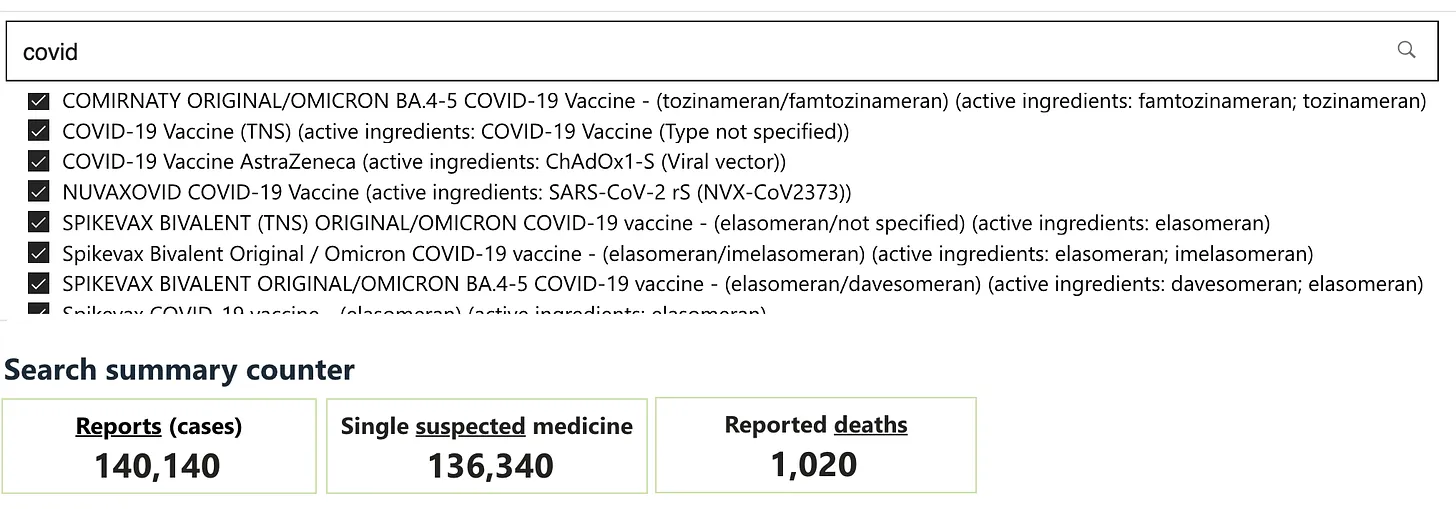
As underreporting is a well-known feature of such safety surveillance systems, the true extent of harm from the Covid vaccines is unknown.
The TGA admitted as much when, in September last year, the regulator refused to say how many of the adverse events reported to the DAEN it had determined to be causally linked to the Covid vaccines, but let slip that the TGA assigns almost all reports a causality status of ‘possible,’ neither confirming nor denying causality.
Other potential contributors to excess mortality may include harms arising from the pandemic response, including lockdowns, isolation, loss of employment, loss of autonomy and increased stress, all of which were raised in submissions to an inquiry into Terms of Reference for a Covid Royal Commission.
Australia’s inquiry into excess deaths will likely consider all this and more. The Committee is expected to provide its report by 31 August 2024.
This article was first published at Dystopian Down Under and Richardson Post.


